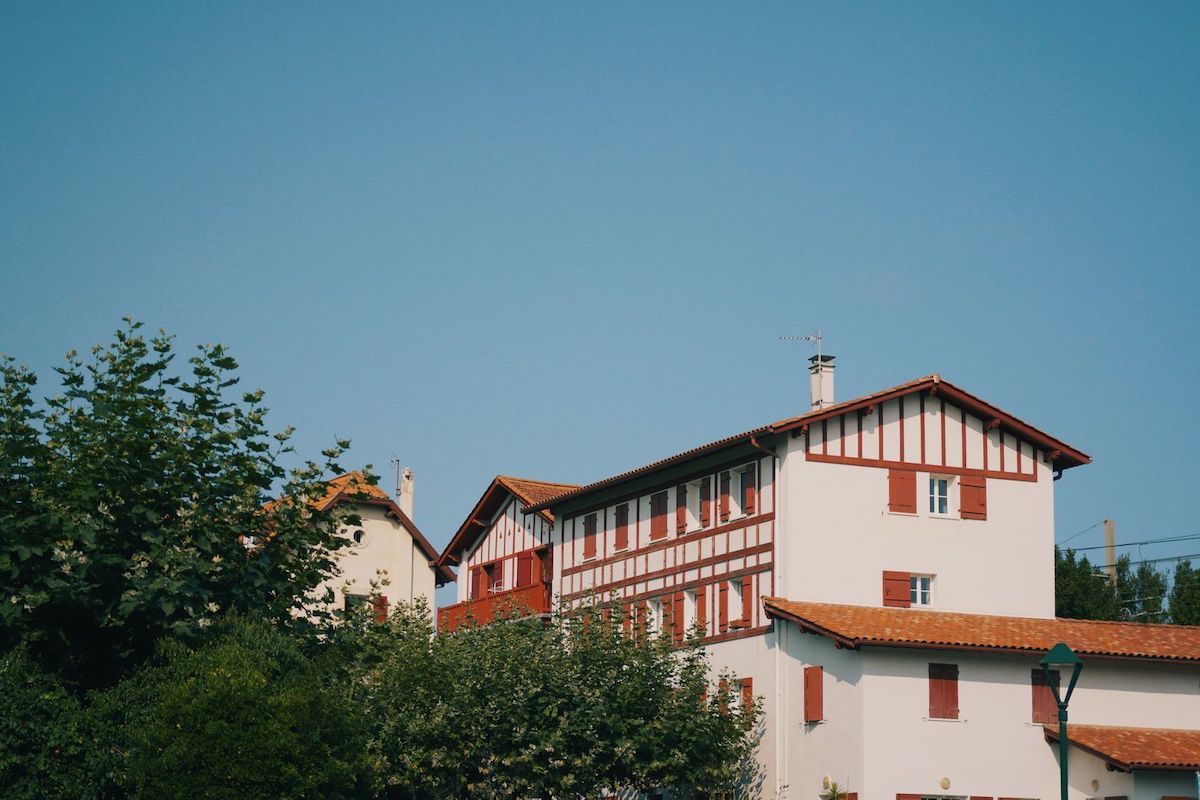Basque architecture refers to the architectural styles and traditions found in the Basque Country, a region spanning parts of northern Spain and southwestern France. It’s a unique and distinctive architectural heritage shaped by the historical, cultural, and geographical factors of the Basque people.

History
The history of Basque architecture is deeply rooted in the region’s cultural and social evolution. The Basques have a long history dating back thousands of years, with influences from various cultures and periods. The architectural styles have evolved through different eras, incorporating elements from Roman, Gothic, Renaissance, and Baroque periods while retaining a distinct Basque identity.
Characteristics
Half-timbered Houses (Basque Farmhouses or “Baserris”): Basque farmhouses, known as “baserris,” are iconic examples of Basque architecture. These structures are typically built using a half-timbered construction method, with wooden frames filled in with stones or bricks and then plastered. They often feature steep sloping roofs covered with red tiles or slate.
Whitewashed Walls: Many traditional Basque buildings have whitewashed walls, which not only provide a distinct appearance but also serve practical purposes such as insulation and protection from the elements.
Strong, Compact Structures: Basque buildings are known for their sturdy and compact construction, designed to withstand the region’s rugged terrain and climate.
Emphasis on Functionality: Basque architecture emphasizes functionality and practicality, with designs that accommodate the agricultural lifestyle of the region.
Churches and Religious Buildings: Basque Country is also home to numerous churches and religious buildings. These structures often exhibit elements of Romanesque, Gothic, and Renaissance architecture.
Influence of Surroundings: Basque architecture often integrates elements that blend with the natural surroundings, such as using local materials like stone, wood, and earth tones to harmonize with the landscape.
Modern Influences: In contemporary times, Basque architecture has seen modern influences and innovations while still holding onto its traditional elements. Prominent architects, like Frank Gehry with the Guggenheim Museum Bilbao, have contributed iconic modern structures to the region.
The distinctiveness of Basque architecture lies in its ability to preserve its cultural identity while adapting to changing times and influences. The region’s unique history, geographical landscape, and cultural heritage have all played a role in shaping the architectural styles seen throughout the Basque Country.
